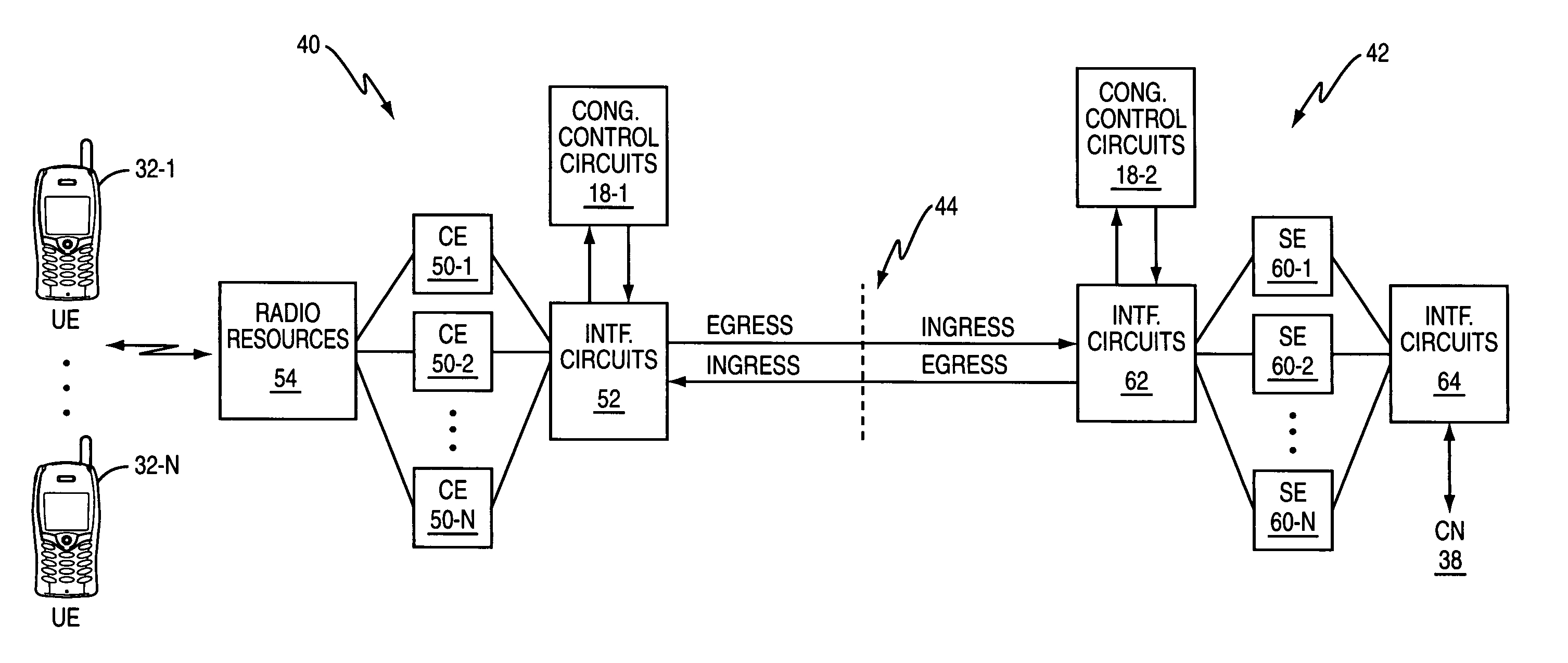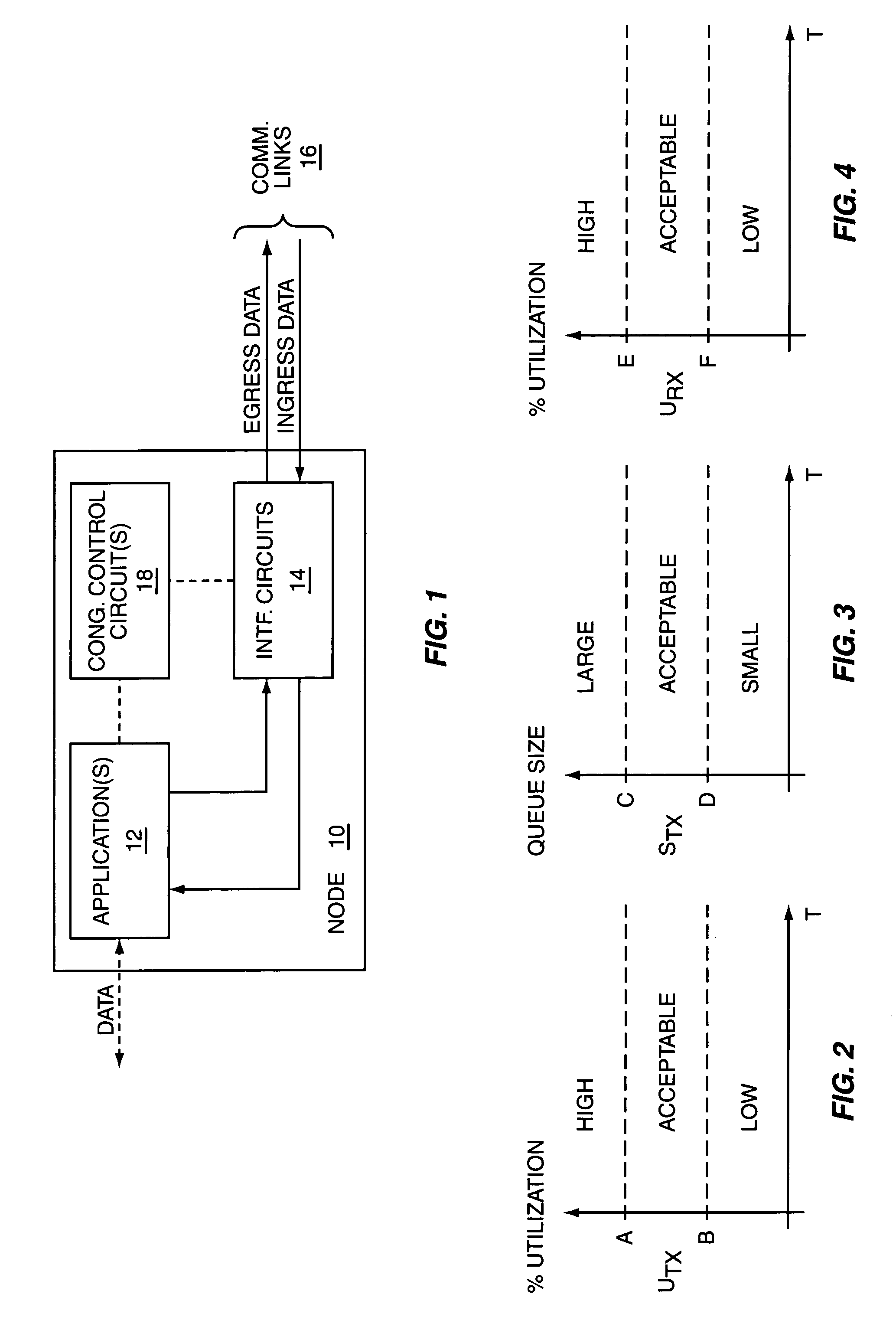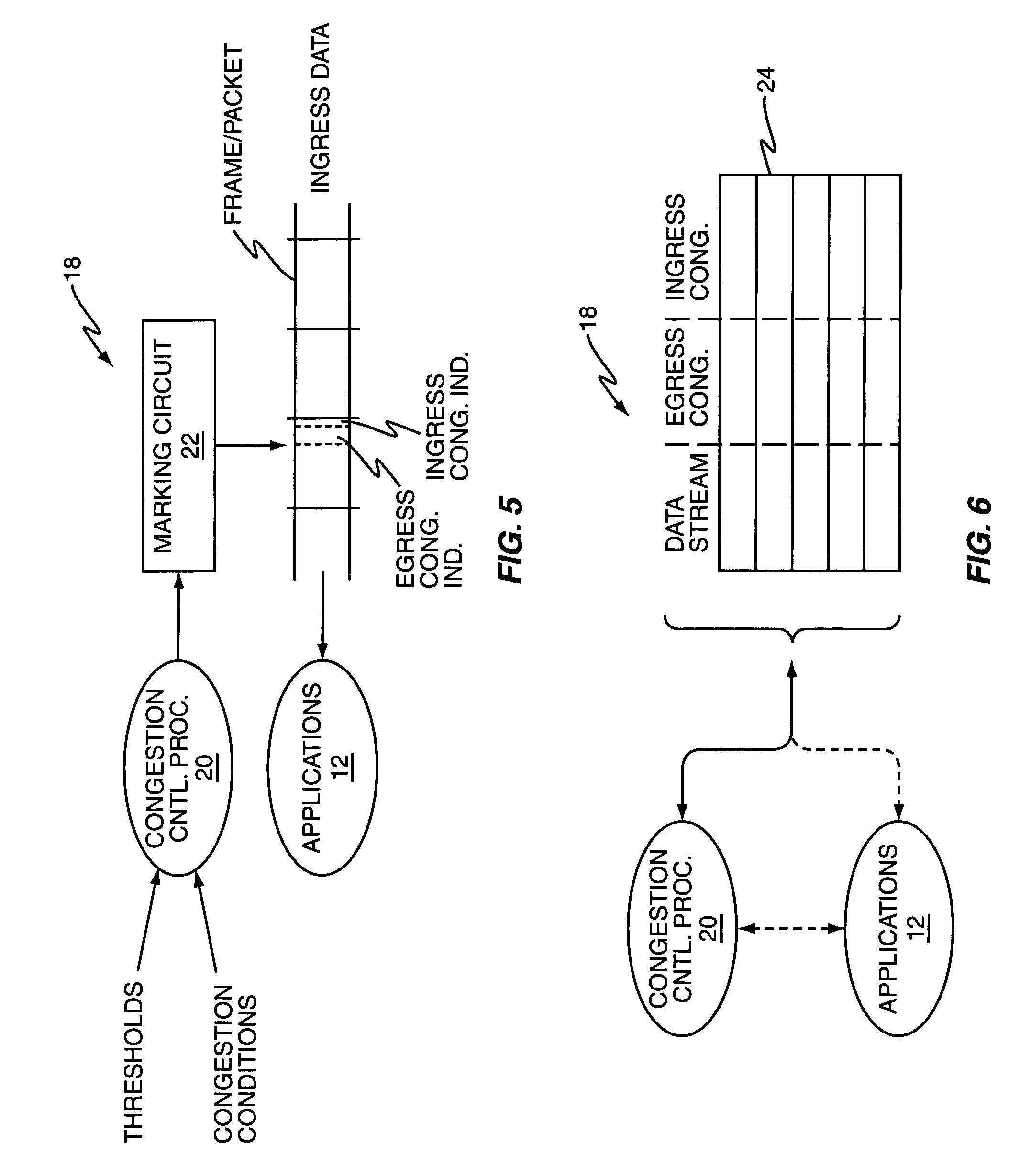Method and apparatus for communication network congestion control
a technology of communication network and congestion control, applied in the field of communication network, can solve the problems of congestion problems in communication network inter-node connections, delivery bottlenecks in such network connections, and similar rnc-to-rbs connection complexity, etc., to reduce ingress data rates, reduce congestion in egress data, and reduce congestion
- Summary
- Abstract
- Description
- Claims
- Application Information
AI Technical Summary
Benefits of technology
Problems solved by technology
Method used
Image
Examples
Embodiment Construction
[0021]FIG. 1 illustrates a communication network node 10 for use in a communication network. The node 10 is configured to implement congestion control responsive to detecting egress and / or ingress data congestion conditions. In at least some embodiments, such flow control operates independently from any protocol-based flow control operating at higher network layers.
[0022] Turning to the details, the illustrated embodiment of the node 10 comprises one or more applications 12 sending and receiving data from the node 10 via interface circuits 14, which communicatively couple to one or more other network nodes—not shown—through egress and ingress communication links 16. The term “applications” as used herein denotes functional or physical processing resources allocated to processing ingress / egress data for a given data stream, or streams. For example, the node 10 may comprise a radio base station in a wireless communication network, in which case the applications 12 may represent a plu...
PUM
 Login to View More
Login to View More Abstract
Description
Claims
Application Information
 Login to View More
Login to View More - R&D
- Intellectual Property
- Life Sciences
- Materials
- Tech Scout
- Unparalleled Data Quality
- Higher Quality Content
- 60% Fewer Hallucinations
Browse by: Latest US Patents, China's latest patents, Technical Efficacy Thesaurus, Application Domain, Technology Topic, Popular Technical Reports.
© 2025 PatSnap. All rights reserved.Legal|Privacy policy|Modern Slavery Act Transparency Statement|Sitemap|About US| Contact US: help@patsnap.com



